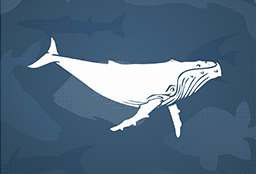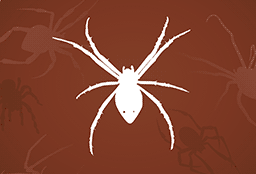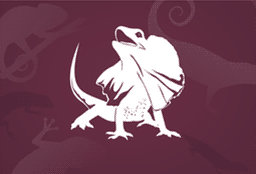Black and white, with the pattern varying across its range. The back of its neck, upper tail and shoulders (on its wings) are white in males and grey in females, and (across most of Australia) the rest of its body is black. In south-eastern, central and south-western Australia, including Tasmania, its back and rump are entirely white. Its eye is red-brown. Young birds are usually grey rather than black and have dark eyes.
Distinctive feature
One toe faces backwards and three face forwards. It has a square-tipped tail.
A type of marine snail (mollusc) with a distinctive round or globe-shaped shell, black or dark grey in colour. The older snails will sometime have a white patch at the flattened tip (apex) of the spirals (whorls) due to weathering.
Nerites have a white aperture (where the snail comes out) with a black rim and they usually have a black operculum (shell door or lid) which is sometimes spotted orange.
Adults have a black body and neck with white wing tips, black legs and a red bill with white bar near tip. Male carries head higher than female in mated pair and has darker bill and iris. Juveniles are lighter in colour and cygnets have grey-brown plumage.
Size
body length 110 - 140 cm; wingspan 160 - 200 cm
Its pear-shaped float (bottle) is a translucent blue, with a wrinkled top which might be tinged with green or pink. It has a single main tentacle, and many shorter tentacles, all of which are blue and hang from its float.
It is not a single animal but rather a colony of four kinds of individuals known as polyps. Each polyp has its own function: one is the float, another captures food, another digests the food, and another is responsible for reproduction.
Size
Float is 2 – 15 cm long, and tentacles up to 10 m.
It has a blue float made of a flat, circular disc with many gas-filled tubes which keep it afloat. The disc is surrounded by tiny blue tentacles.
The Blue Button is, in fact, a colony made up of different types of polyps, including some that are specialised for catching food, defense, or reproduction.
Size
Its disc is up to 2.5 cm across.
Small marine snails (molluscs), often called Australwinks.
They are light blue to grey in colour and have a smooth shell that spirals up to a light brown to reddish-brown sharp tip (apex).
Size
10 - 15 mm
The Christmas Spider is known by several other names, most commonly Jewel Spider but also as Six Spined Spider or Spiny Spider.
Females have bright yellow and white patterns with a ring of black spines. Melanic females have the same shape but may be completely black. Males have smaller spines and have a yellow, brown, white and black pattern. Six spines protrude from the sides and bottom end of the abdomen.
Size
Females are larger at 7 mm, males are 4 mm.
Its genus name Leptospermum is from Greek leptos (thin) and sperma (seed), referring to its small seeds; and its species name laevigatum is from Latin laevigatus (smooth), probably referring to the appearance of the plant.
Also known as Australian Myrtle and Victorian Tea Tree.
A tall, bushy shrub or small tree, with bark that sheds in strips. Grows up to 6 m tall.
Leaves
Grey-green and obovate (egg-shaped and flat, with the narrow end attached to the stalk). They are 1.5 – 3 cm long and 5 – 8 mm wide.
Flowers
White and usually in groups of two. The flower heads are usually 1.5 – 2 cm in diameter, and made up of five petals that are 5 – 8 mm long, with many stamens protruding from the centre that are 2 mm long.
The caterpillar (larva) is initially a pale yellow-grey, before turning green with long black hairs along its body. Its head is brown-black with short hairs. The female butterfly (adult) is orange with creamy yellow and dark brown patches towards the tip of its forewings (front wings). The male is less colourful, being brown and orange with no pale patches. It also has an obvious raised vein in the middle of its forewing. Both males and females have a small eye-spot on each wing. The undersides of the wings in both the male and female are paler with faint markings, and their hindwings have very few markings. The female’s hindwing is darker then its forewing. It is difficult to identify these butterflies when they are resting with their wings closed. The males emerge quite a while earlier in the year before the females.
Size
Caterpillar about 3.5 cm long; Butterfly wingspan 5.5 – 7.5 cm (females are larger than males).
A type of sea squirt, an animal that forms large colonies as a dense mat over rocks which are highly visible at low tide.
Its shape is squat and globular. It has a thick leathery outer layer called a ‘tunic’ which is often covered with brown or green algae. Cylindrical in shape with 2 openings called siphons for inhaling and exhaling water and feeding.
This frog goes by several common names: Eastern Banjo Frog, Eastern Pobblebonk Frog and Southern Bullfrog. The first two are based on its distinctive 'bonk' call which sounds similar to the string of a banjo being plucked.
Its back ranges from grey, to olive-green, dark brown or black, with dark marbling or flecks. It has a pale yellow stripe running from under its eye to its arm, a dark band above this, and may also have a pale stripe running down its back. Its sides commonly have a purple or bronze sheen, mottled with black. Its belly is white and sometimes mottled with grey. Its back is warty and rough but its belly is smooth.
Distinctive feature
A prominent gland on the outer side of its hind leg (its shin) and a fleshy lump at the base of each hind foot.
The top of the adult male's head is grey-black, extending in a line down either side of its white breast. Its throat is also white, with a rufous patch in the centre. Its wings and lower back are dark metallic grey and its upper back and underneath are buff. In flight, its white outer tail feathers are visible. The female has similar but duller colouring. A young bird has less distinct markings with dark olive on top of its head, a white chin and throat and a cinnamon chest and belly.
Distinctive feature
It has a very long, fine beak that curves downward.
It has a grey back and head, and bright-yellow underparts. Southern birds have an olive-yellow rump, while birds in northern Australia have a brighter yellow rump. Its throat is off-white and when seen in flight, it has a pale bar on its wings. Its bill is black. Young birds are rufous-brown with paler streaks.
Size
13 – 17 cm long, the males are slightly larger
Elephant snails are a type of semi-rare solitary marine snail (mollusc) and look like a black slug with a small white, shield-like shell on their backs.
Size
70 - 150 mm
Dark slate-grey on its head, back and wings, and pale orange-brown below; its undertail is boldly barred black and white. Its legs and feet are dull yellow and its bill is black. Young birds are duller and browner, with mottled markings, especially on their breast and underparts.
Distinctive feature
A yellow eye-ring which is tinged green in young birds.
Grey-brown to bronze, with a dark stripe running along each side of its body from its nostril, across its eye to its tail, getting wider from its front legs. Its body pales below the stripe to a cream belly.
This species has a lighter body with a less obvious stripe running along its sides than the Southern Garden Skink.
Size
8 - 10 cm (nose to end of tail).
Grey-brown to bronze, with a dark stripe running along each side of its body from its nostril, across its eye to its tail, getting wider from its front legs. Its body pales below the stripe to a cream belly.
This species has a ‘heavier’ looking body and a more obvious stripe running along its sides, compared to the Northern Garden Skink.
Size
8 - 10 cm (nose to end of tail).
The female’s abdomen can be variable but is typically brown to yellow with short silvery-white hairs. The legs are usually black with bright yellow patches on the underside of the many leg joints. Its palps (small leg-like structures on either side of its fangs) are distinctly red.
It makes golden webs, after which it is named.
Size
Females are 4 – 4.5 cm long but the tiny males are only 5 – 6 mm long (body length). The Females can have a legspan of up to 15 cm!
The adult male has a bright-yellow underbody, olive-green back and wings, and a black head with a bright-yellow collar. Its throat is white, with a broad black band which separates it from the yellow breast. Its beak and legs are black. The adult female has grey upperparts with a pale olive tinge, and is pale grey below with a pale yellowish tinge. Its beak is dark brown and its legs are grey-brown. Both sexes have a red-brown eye. Juvenile birds are rufous above and below, and as they mature, gradually resemble a female, though they retain some rufous feathers in their wings.
Its head and upperparts are mostly dark grey, with a white eyebrow and throat, a narrow grey band across the upper breast and a creamy-buff belly. The feathers of its long tail have white edges and tips, and the tail is often fanned out.
Size
14 – 16 cm long
Dark grey to black on top and usually white on the belly. Humpbacks have very large, elongate pectoral fins, a small but prominent dorsal fin and a large, bushy blow (up to 5 m tall).
The large fins, dark tail with white underneath, active breaching and tendency to “hump” their backs and raise their tail out of the water before diving, distinguish humpbacks from other whales.
Size
Adult humpbacks can reach a length of up to 15 m.
A black and white bird, the pattern varies slightly between sexes. The male has a white eyebrow above a black horizontal eye-stripe, a black face and throat, while the female has a white face and throat, with a broad vertical stripe through the eye, and no white eyebrow. Both sexes have a thin white bill and black legs and feet. Juvenile Magpie-larks have a black forehead, white eyebrow and a white throat.
The top of its head and its hindneck are black. Its forehead is covered with bright-yellow skin, which hangs down to form wattles. The rest of the head is white. Its back and wings are pale grey-brown. Below, black plumage extends from the hindneck onto the sides of its breast, and the rest of the underparts are white. Its long legs and feet are reddish and its bill is yellow. It has a prominent spur on each wing.
Juveniles are similar to adults, but have dark ‘scallop’ markings on the back and wings, and the wing spur and wattles are either smaller or absent.
Distinctive feature
A yellow wattle that extends from its forehead to behind its eye and hangs down beside its chin.







